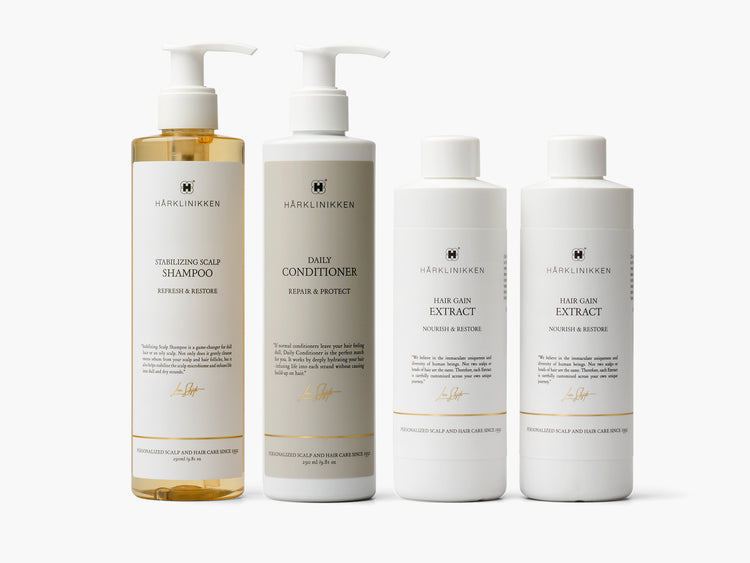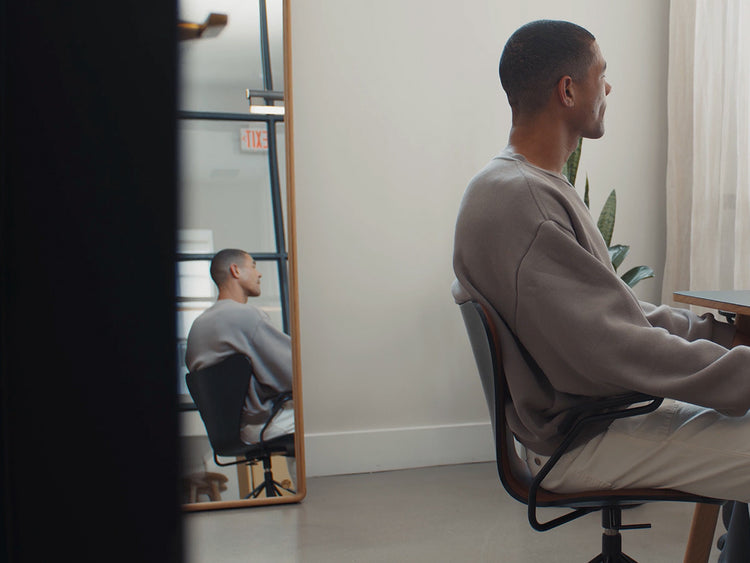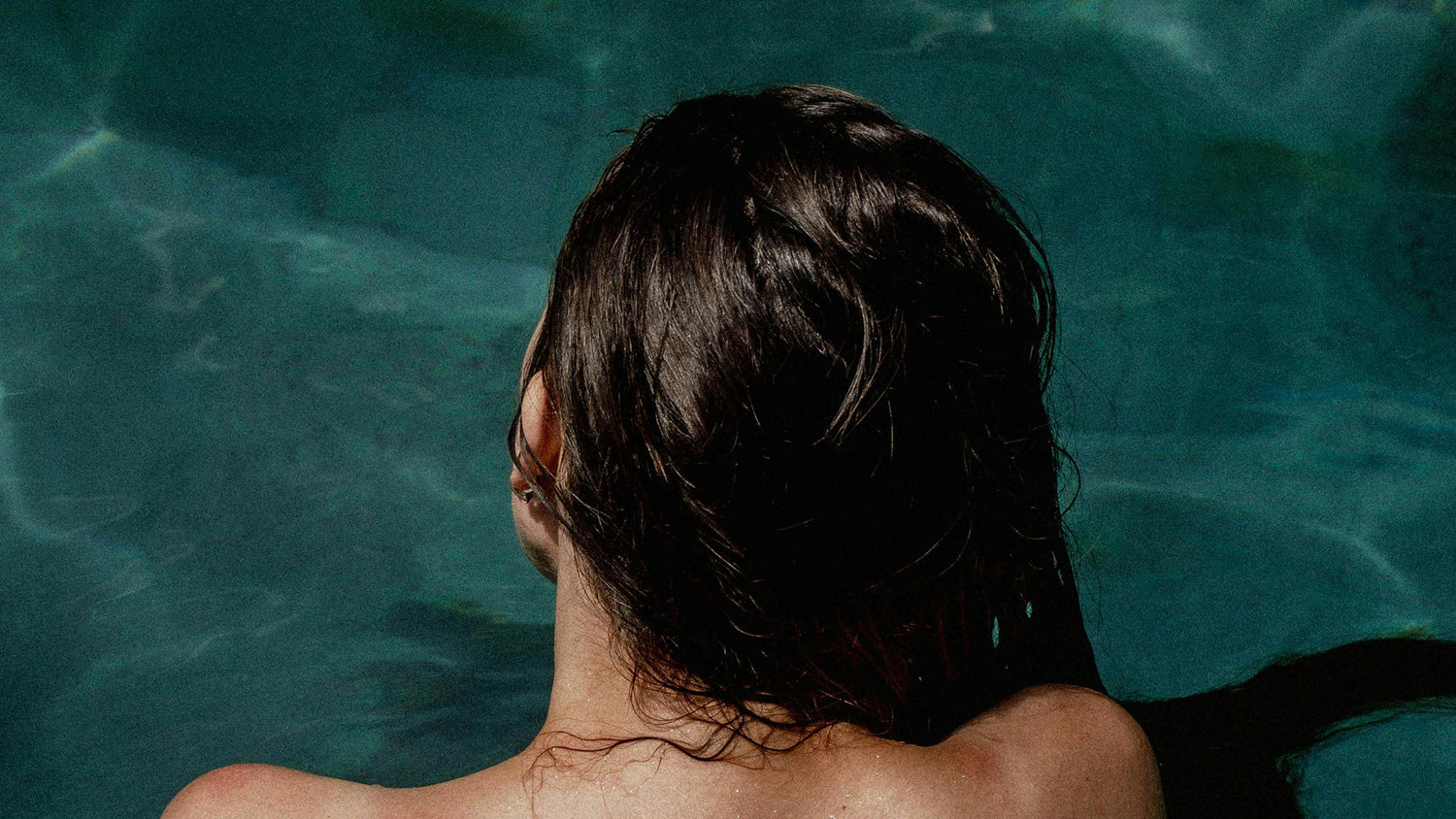If you plan to escape the season’s soaring temperatures by swimming in a pool this summer, you’ll most likely come into contact with chlorine. Despite being an essential disinfectant that keeps pool water safe from bacteria, viruses and fungus, this commonly used chemical can have harsh effects on your scalp and hair health. From the dreaded “green hair”, to dehydrated strands and texture changes, discover how chlorinated water can impact your scalp and strands – as well as how to protect from it, this summer and beyond.
What does chlorine do to your hair?
When chlorine is added to a pool, it binds to different minerals and substances already present in the water such as potassium, sodium and copper. This bonding process turns these elements into salts which then have drying effects on your scalp and hair. Although it is widely believed that colour-treated hair is the most susceptible to chlorine damage, this chemical can affect the health of all hair types – colour-treated or not.
What does chlorine do to dyed and colour-treated hair?
Chlorine impacts colour-treated hair to varying extents. Individuals with hair that’s dyed darker shades might find that pool water has stripping effects that leave their hair feeling dry, and the colour looking faded and less vibrant.
What does chlorine do to bleached hair?
If you’ve heard of the “green hair” phenomenon, you’ll know that chlorinated water can drastically discolour hair that’s been bleached or lightened. When chlorine interacts with hard water minerals like copper it causes oxidisation. As your hair becomes saturated with pool or shower water that has high chlorine levels, these altered chemicals enter your hair strands and deposit a greenish hue – leading to unwanted discolouration that needs to be corrected with a clarifying shampoo to remove the buildup. Additionally, the drying chemicals leave hair feeling brittle, straw-like and dehydrated.
What does chlorine do to chemically straightened hair?
Chemical smoothing and straightening treatments such as relaxers, texturisers and keratin treatments alter the natural hair texture in various ways, but generally, they disrupt the hair cuticle – the hair strand’s outermost, protective layer – which compromises hair health, leaving the strands weaker and porous. Exposure to chlorinated water can cause excessive dryness and further weaken the hair, making it more susceptible to damage.
How does chlorine affect different hair types?
All hair types require hydration to maintain optimal elasticity, manageability and strength, but hair types that are naturally more prone to dryness are especially vulnerable to chlorine damage – as these hair types could already be weakened by processing, hair miniaturisation, heat styling and more.
Thin and Fine Hair
These hair types have a hard time retaining moisture because the strands lose hydration as quickly as they absorb it. Moisture is essential for hair health, strength, elasticity and manageability, so hair types that lack it are more prone to breakage and splitting. Chlorinated water strips hair of its natural oils, so after swimming or showering with highly chlorinated water, individuals with thin, fine hair will often experience dry, brittle strands that are even more prone to damage and tangling.
Kinky, Curly and Coily Hair
Curly hair types tend to be drier because the scalp’s natural oils can have a hard time travelling down the length of their textured strands. Chlorinated water can further dehydrate these hair types, leading to course strands that have less definition, increased frizz and dry, brittle ends that are more susceptible to breakage and split ends.
How to protect your hair from chlorine damage?
As obvious as it might sound, wearing a swim cap while you take a dip is the best way to protect your scalp and hair from chlorine. But if that isn’t an option, here are two tips that will help you maintain smooth, silky strands while you swim.
1. Soak Your Hair Before a Swim
You may already be in the habit of cleansing or rinsing your hair after taking a dip in a pool or the sea, but it’s also highly beneficial to rinse your hair beforehand. Your hair strands can only absorb a certain amount of water, so saturating them in fresh shower water before you swim limits the amount of chlorine your hair soaks up once submerged in pool water.
2. Pre-moisturise Your Strands with a Hair Mask
For added hydration, saturate your hair with fresh shower water and apply a leave-in conditioner – such as the Hair Hydration Crème, Hair Mask or Weightless Conditioner – to the damp hair, and leave the nourishing formula to work for five to ten minutes before jumping in the pool. Thoroughly coating your strands in a moisturising conditioner will provide essential protection from the drying effects of chlorine.
How to get chlorine out of your hair?
Cleansing after each dip is essential to washing chlorine out of your hair and limiting further damage. Immediately after leaving the pool, thoroughly rinse your hair with lukewarm water to remove any residual chlorine and add a new layer of hair hydration. As soon as possible, shampoo your scalp and hair with a clarifying formula uniquely designed to cleanse and strengthen, like our Balancing Shampoo. For an added boost of nourishment and hydration, use our Fortifying Shampoo as an add-on cleanser.
How to fix chlorine-damaged hair?
1. Cleanse Correctly
A reparative aftercare routine is essential to limiting the harsh effects of chlorine on your hair. Cleansing is crucial to ridding your scalp and hair of chlorinated water. We recommend using a gentle yet effective clarifying formula – such as our Balancing or Fortifying shampoos– to clear the hair of chlorine and buildup.
2. Apply a Pre-Shampoo Treatment
If your hair feels especially dry and brittle, coat your lengths and ends with our Hair Mask or Hair Hydrating Crème and let the formula work for 10 to 15 minutes before washing. A pre-shampoo treatment provides added hydration and helps to protect from breakage while you detangle.
3. Hydrate Often
Once cleansed, replenish your strands with a nourishing leave-in conditioner to lock in moisture and boost strength, elasticity, softness and shine. Our multipurpose, silicone-free Hair Mask and Hair Hydrating Crème are each uniquely formulated to be used as reparative leave-in hydrators that do not coat the strands in buildup or residue. And our Weightless Conditioner is a buildable blend designed to be reapplied throughout the day for a revitalising boost of deep hydration, shine, vibrancy, bounce and smoothness.

To remove the buildup and smell of chlorine from your hair, rinse with fresh water immediately after swimming and cleanse with one of Hårklinikken’s gentle, yet effective shampoos.
If you don’t rinse or cleanse your hair with fresh water after swimming, the chlorine crystalises in your strands, causing further dryness that can lead to damage.
Chlorinated water can cause hair discolouration and fading. When chlorine comes into contact with mineral in pool water, it binds to them and turns them into salts. These salts have drying and stripping effects on the hair, causing it to feel dehydrated and look less vibrant.
Unsure where to start?
We only accept candidates who we believe we can help, which is why our online Hair Assessment is the best place to start. Based on your results, you will either qualify for immediate treatment or we will organize a consultation.




